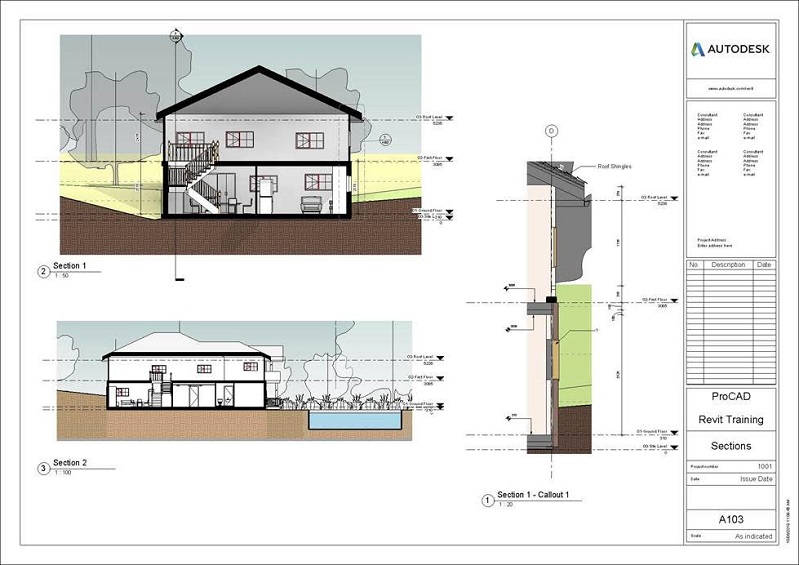


Since building projects themselves tend to be extremely complex, the Autodesk Revit Architecture software is also complex. The objective of the Autodesk Revit Architecture Fundamentals training guide is to enable students to create full 3D architectural project models and set them up in working drawings. This training guide focuses on basic tools that the majority of students need to work with the Autodesk Revit Architecture software.
If you would like us to run any of our Courses at your Premises, please Request a Course Quote and we will contact you to discuss your request.
The Revit training topics include the following:

Module 1: Introduction to Autodesk Revit Architecture
• Building Information Modeling
• Overview of the Interface
• Standard Terminology
• Starting Projects
• Viewing Commands
Module 2: Basic Drawing and Editing Tools
• General Drawing Tools
• Editing Elements
• Basic Modifying Tools
Module 3: Datum Elements - Levels and Grids
• Setting Up Levels
• Linking and Importing CAD Files
• Creating Structural Grids
• Adding Columns
Module 4: Drawing and Modifying Walls
• Drawing Walls
• Modifying Walls
• Helpful Editing Tools
Module 5: Doors and Windows
• Adding Doors and Windows
• Loading Door and Window Types from the Library
• Creating Additional Door and Window Sizes
Module 6: Curtain Walls
• Creating Curtain Walls
• Adding Curtain Grids
• Working with Curtain Wall Panels
• Attaching Mullions to Curtain Grids
Module 7: Creating Views
• Duplicating Views
• Adding Callout Views
• Setting the View Display
• Creating Elevations and Sections
Module 8: Floors
• Creating Floors
• Creating Shaft Openings
• Creating Sloped Floors
Module 9: Components
• Adding Components
• Modifying Components
Module 10: Reflected Ceiling Plans
• Creating Ceilings
• Ceiling Soffits
• Adding Ceiling Fixtures
Module 11: Roofs
• Creating Roofs
• Creating Roofs by Footprint
• Reference Planes and Work Planes
• Creating Roofs by Extrusion
• Cleaning Up Wall and Roof Intersections
Module 12: Vertical Circulation
• Creating Assembled Stairs
• Modifying Assembled Stairs
• Sketching Custom Stairs
• Creating Ramps
• Working with Railings
Module 13: Construction Documents
• Setting Up Sheets
• Placing and Modifying Views on Sheets
• Printing Sheets
Module 14: Annotating Construction Documents
• Working with Dimensions
• Working With Text
• Adding Detail Lines and Symbols
Module 15: Tags and Schedules
• Adding Tags
• Rooms and Room Tags
• Working with Schedules
• Creating Legends
Module 16: Detailing in Autodesk Revit Architecture
• Setting Up Detail Views
• Creating Details
• Annotating Details
• Keynoting and Keynote Legends
• Patterning
Appendix A: Introduction to Worksets
• Introduction to Worksets
Appendix B: Additional Tools
• Creating Curtain Wall Types with Automatic Grids
• Annotating Dependent Views
• Enhancing Views
• Creating Dormers
• Creating a Repeating Detail
• Revision Tracking
• Creating Schedules
• Modifying Schedules
Appendix C: Autodesk Revit Professional: Architectural Exam Objectives
We speak your language - You'll find we're all open, approachable and can communicate at all levels. We'll cut through the "tech talk", breaking it down into easily understandable concepts. Whatever the situation, you'll know exactly what we're teaching and why.
PROCAD has an affinity for Training CAD and has done